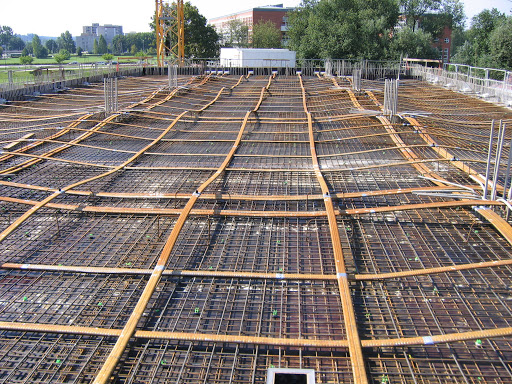Posted by
Civil Engineering on
Friday, 14 August 2020

1. Ducts
Thin sheet metal pipes with claw coupling or welded overlapped seam supplied in lengths of 5 and 6 m respectively are used as a standard. Ducts are connected to each other by an external screw coupling and sealed with PE tape. Plastic ducts are also available in the market these days which are water tight , frictionless and fatigue resistant
Ducts are embedded inside a concrete structure to form a void for installing and prestressing post-tensioning strands after the concrete attains desired strength. ducts are manufactured from different materials such as steel and plastic. ducts type and material can change according to the location and purpose of use.
There are two main reasons for grouting the ducts of post-tensioned concrete members. One is to provide efficient bond between the prestressing steel and the concrete member so as to control the spacing of cracks at heavy overload. This increases the ultimate strength of a structural member. The other is to prevent corrosion of the prestressing steel. Both of these objectives require complete filling of the void spaces within the duct.
2. Tendons
The basic element of a post-tensioning system is called a tendon. A post-tensioning tendon is made up of one or more pieces of prestressing steel, coated with a protective coating, and housed inside a duct or sheathing.
Post-tension steel tendons have an ultimate tensile strength of 270,000 pounds per square inch (PSI) compared to mild rebar steel with a typical tensile strength of 60,000 pounds per square inch. Post-tension tendons are fabricated to the proper lengths and delivered to the site where they are simply uncoiled and placed in the forms prior to concrete placement. Post-tension reinforcement is installed must faster than rebar steel which reduces construction time and cost. In short, post-tension concrete construction gives you more strength per dollar than conventionally reinforced concrete and when properly designed and constructed, less cracks.
3. Anchors
Anchors are used to anchor the tendons into the concrete while terminating or joining two tendons. Main function of anchorage is to transfer the stressing force to the concrete once the stressing process is completed.
A Post Tensioning Anchorages is a mechanical device,
consisting of all components required to transfer the post-tensioning force from the prestressing steel to the structure.in addition, Its including all accessories for grouting.
Furthermore, Stressing anchorage is the most common form of post-tensioning system.
It is widely used in concrete structure and soil / rock retaining walls.post tensioning anchorages consist of wedge, anchor head, bearing plate and spiral reinforcement.
Labels:
Prestressed Concrete
Thanks for reading Components of Post Tensioning Slab . Please share...!







0 Comment for "Components of Post Tensioning Slab "